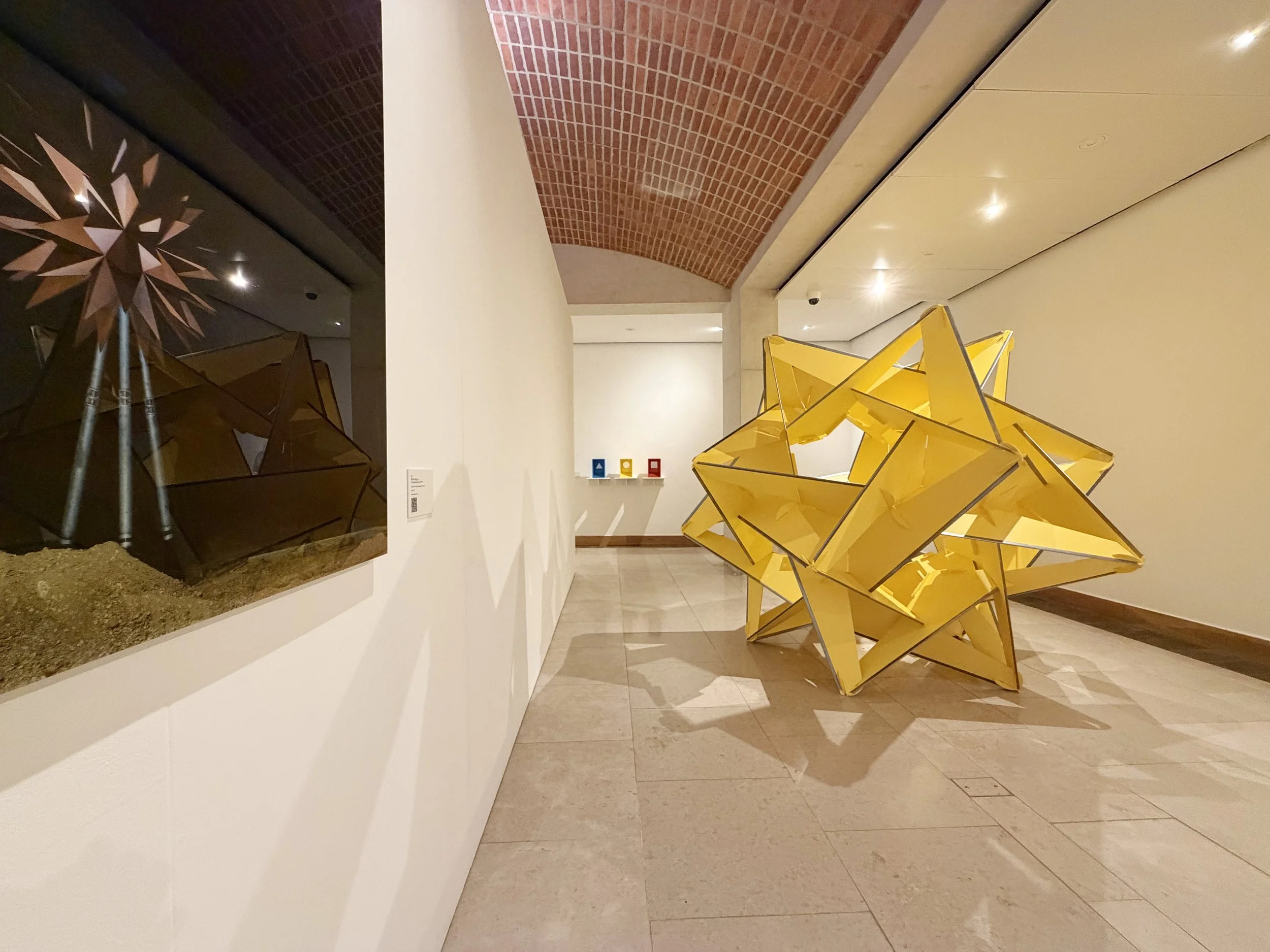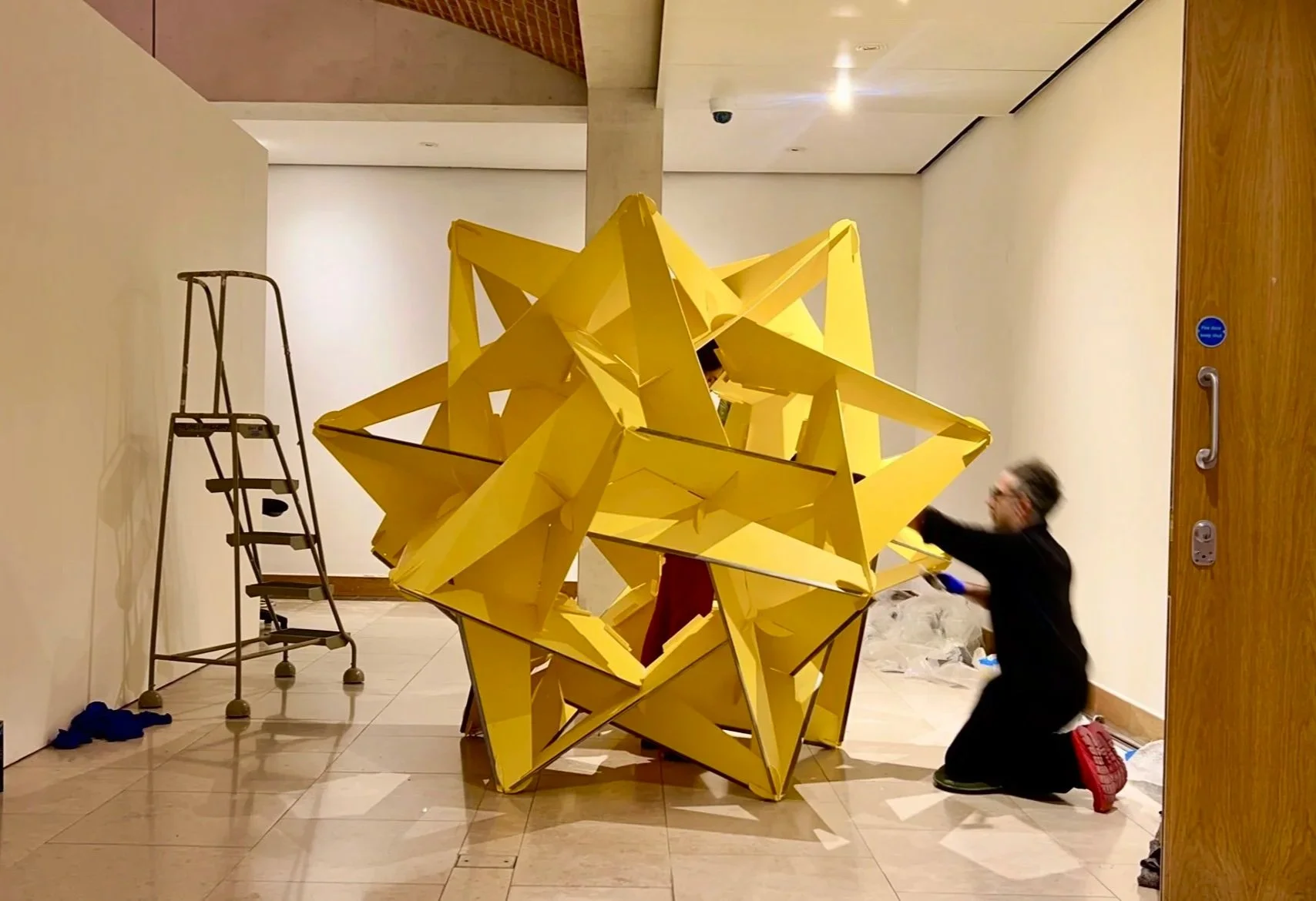 Image 1 of 5
Image 1 of 5

 Image 2 of 5
Image 2 of 5

 Image 3 of 5
Image 3 of 5

 Image 4 of 5
Image 4 of 5

 Image 5 of 5
Image 5 of 5






No.9 - Follow me, follow me
Painted PVC and steel, 2100 x 2100 x 2100mm
Follow me, follow me is a star-shaped sculpture composed of interlocking geometric forms, designed to be navigated on foot and studied from multiple angles. Drawing from Singporewala’s early interest in astrophysics, the work explores mathematical structures, cosmic order and the unseen forces that influence human lives. Its form, based on the stellation of an icosahedron, draws from geometries associated with celestial mapping and symbolic orientation. The sculpture reflects on gravity, both literal and relational. Just as planetary bodies are bound through invisible forces, so too are people guided by those around them. Family, mentors and inherited traditions exert a gravitational pull, shaping personal trajectories across time. The star becomes a spatial manifestation of that influence.
While the structure emerges from abstract systems, the title invites reflection on direction and trust. Beneath the formal structure lies a deeper narrative of cultural inheritance rooted in childhood memory. At Catholic school, Singporewala learned that the Three Kings in the nativity story of Christ were believed to be Magi, astronomer-priests who followed a directional star. Learning that the Magi were thought to be Zoroastrian allowed him to reinsert his heritage into a dominant cultural narrative. The star, once traced by the Magi, remains suspended as an open invitation to all who seek their place in the world.
Painted PVC and steel, 2100 x 2100 x 2100mm
Follow me, follow me is a star-shaped sculpture composed of interlocking geometric forms, designed to be navigated on foot and studied from multiple angles. Drawing from Singporewala’s early interest in astrophysics, the work explores mathematical structures, cosmic order and the unseen forces that influence human lives. Its form, based on the stellation of an icosahedron, draws from geometries associated with celestial mapping and symbolic orientation. The sculpture reflects on gravity, both literal and relational. Just as planetary bodies are bound through invisible forces, so too are people guided by those around them. Family, mentors and inherited traditions exert a gravitational pull, shaping personal trajectories across time. The star becomes a spatial manifestation of that influence.
While the structure emerges from abstract systems, the title invites reflection on direction and trust. Beneath the formal structure lies a deeper narrative of cultural inheritance rooted in childhood memory. At Catholic school, Singporewala learned that the Three Kings in the nativity story of Christ were believed to be Magi, astronomer-priests who followed a directional star. Learning that the Magi were thought to be Zoroastrian allowed him to reinsert his heritage into a dominant cultural narrative. The star, once traced by the Magi, remains suspended as an open invitation to all who seek their place in the world.